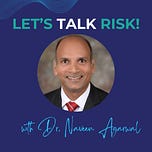“Risk management is often seen as a check the box activity”.
Taylor Dieringer reminds us in this Let’s Talk Risk! conversation that risk management should be an ongoing, continuous process within your quality management system, that monitors, evaluates and controls risk throughout the product lifecycle, and not just in the pre-market phase.
The post-market surveillance process serves as a link between real-world safety performance of a medical device and design and development of new products to achieve this objective.
Listen to this Let’s Talk Risk! conversation with Taylor Dieringer, which also includes an open discussion with the audience. Jump to a section of interest using these timestamps.
00:02:30 Introduction
00:04:03 What is post-market surveillance and why it is needed
00:06:51 Post-market surveillance process is a continual learning process
00:08:05 Setting thresholds for action during post-market surveillance
00:11:00 How to detect and evaluate safety signals
00:13:40 Why we need a cross-functional team for post-market surveillance
00:16:37 Audience Q&A
00:30:05 Closing comments and key takeaways
If you enjoyed this podcast, consider subscribing to the Let’s Talk Risk! newsletter.
About Taylor Dieringer
Taylor Dieringer is currently a staff quality engineer at iRhythm Technologies, Inc. where he leads risk management activities throughout all phases of the product lifecycle, ranging from design to post-market surveillance. He is a biomedical engineer by training with prior experience in design and development, quality assurance and risk management at multiple medical device organizations.
About Let’s Talk Risk! with Dr. Naveen Agarwal
Let’s Talk Risk! with Dr. Naveen Agarwal is a weekly live audio event on LinkedIn, where we talk about risk management related topics in a casual, informal way. Join us at 11:00 am EST every Friday on LinkedIn.
Disclaimer
Information and insights presented in this podcast are for educational purposes only. Views expressed by all speakers are their own and do not reflect those of their respective organizations.












Share this post